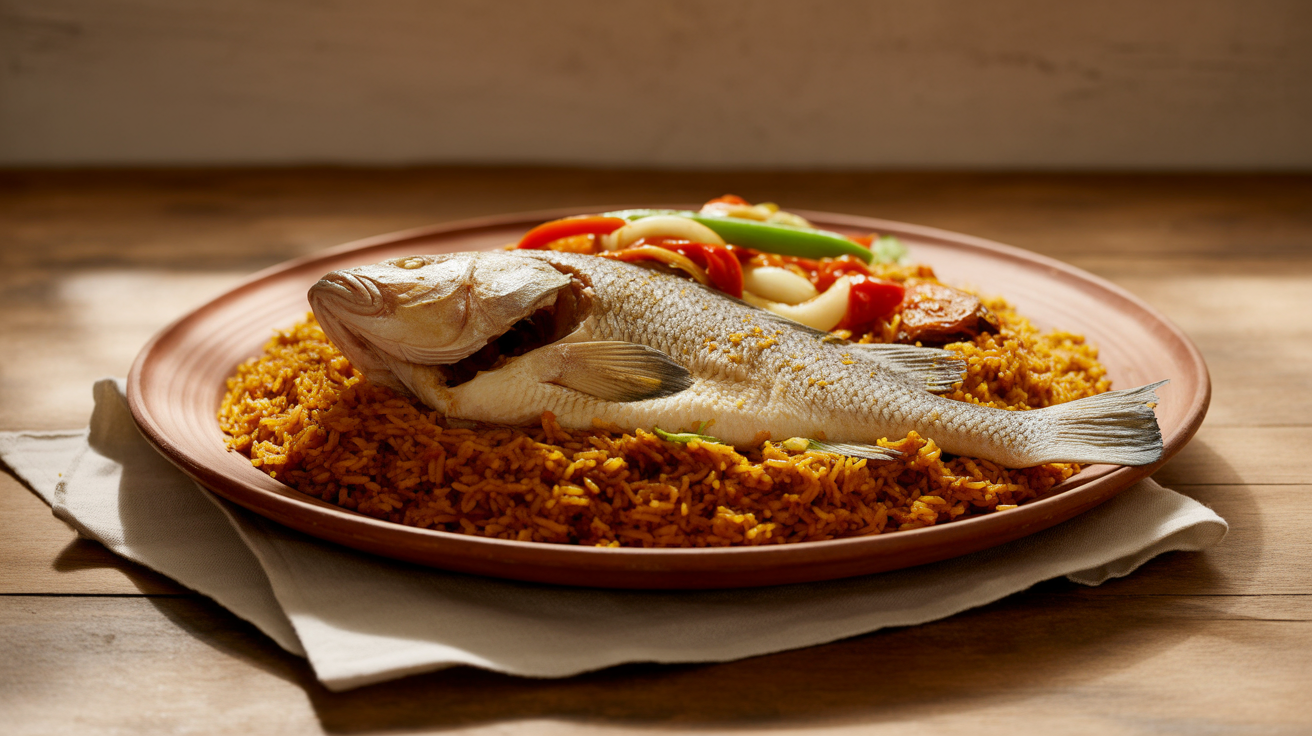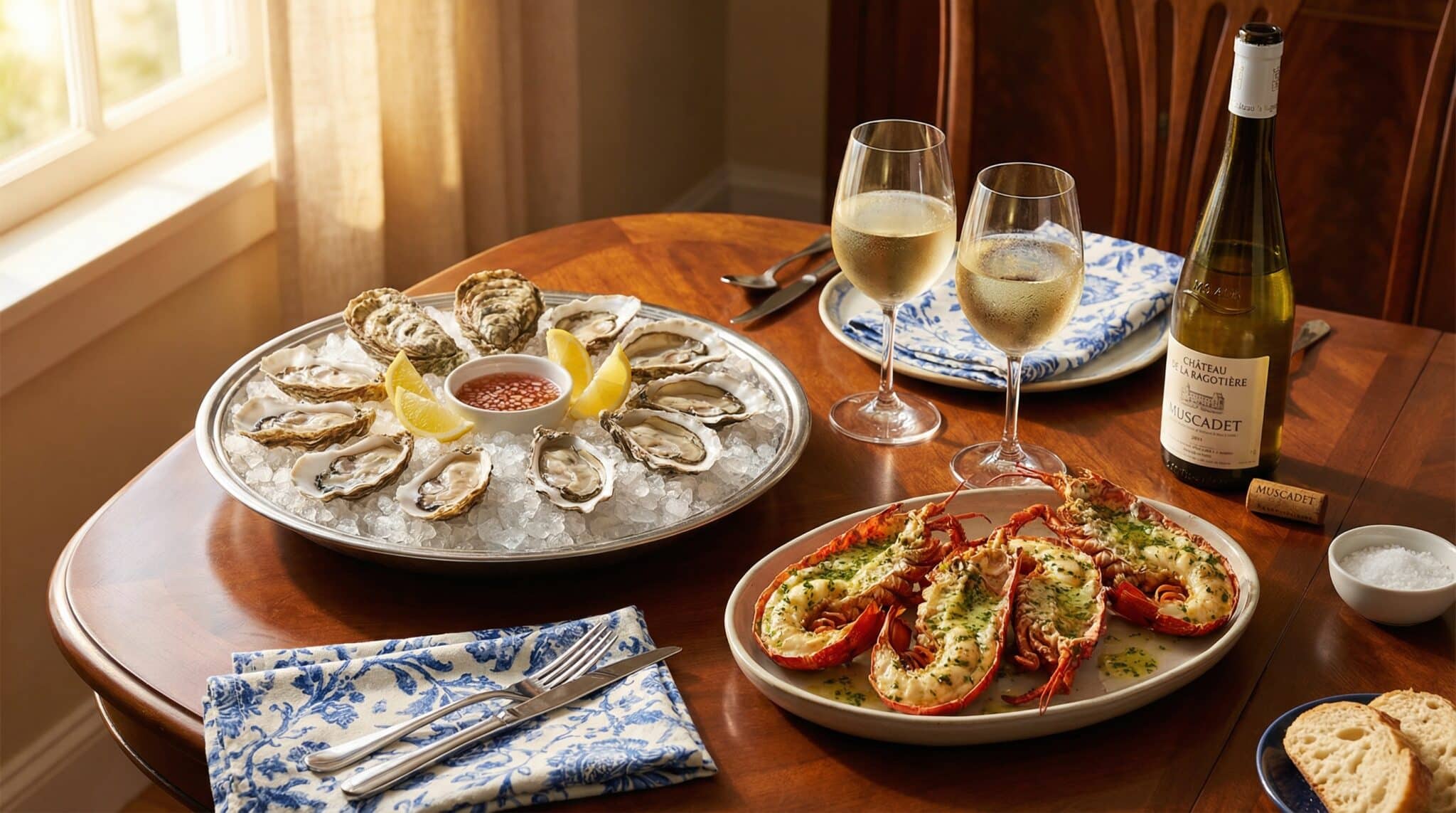If you are looking for a meal that’s full of flavor, color, and comfort, then Thieboudienne is a great choice.
It’s the national dish of Senegal and one of the most loved versions of Jollof rice.
This dish has everything in one pot: tender fish, soft vegetables, and tomato-flavored rice that soaks up all the good stuff. It’s bold, filling, and made to be shared.
In this blog, you will learn exactly how to make Thieboudienne at home, and by the end, you will have a dish that brings people together around the table.
How to Make Senegalese Jollof Rice?
Making Thieboudienne is all about cooking each part with care and attention. Follow these steps to create a flavorful, filling meal.
Ingredients Required
- Fresh whole fish (e.g., grouper, snapper)
- Broken rice (or substitute)
- Tomato paste, fresh tomatoes (optional)
- Carrots, cabbage, cassava, eggplant, and okra
- Onion, garlic, green bell pepper
- Oil, salt, black pepper, bouillon cubes
- For the Fish Stuffing (Rof): Parsley, garlic, onions, hot pepper, bouillon
Step 1: Preparing the Rice
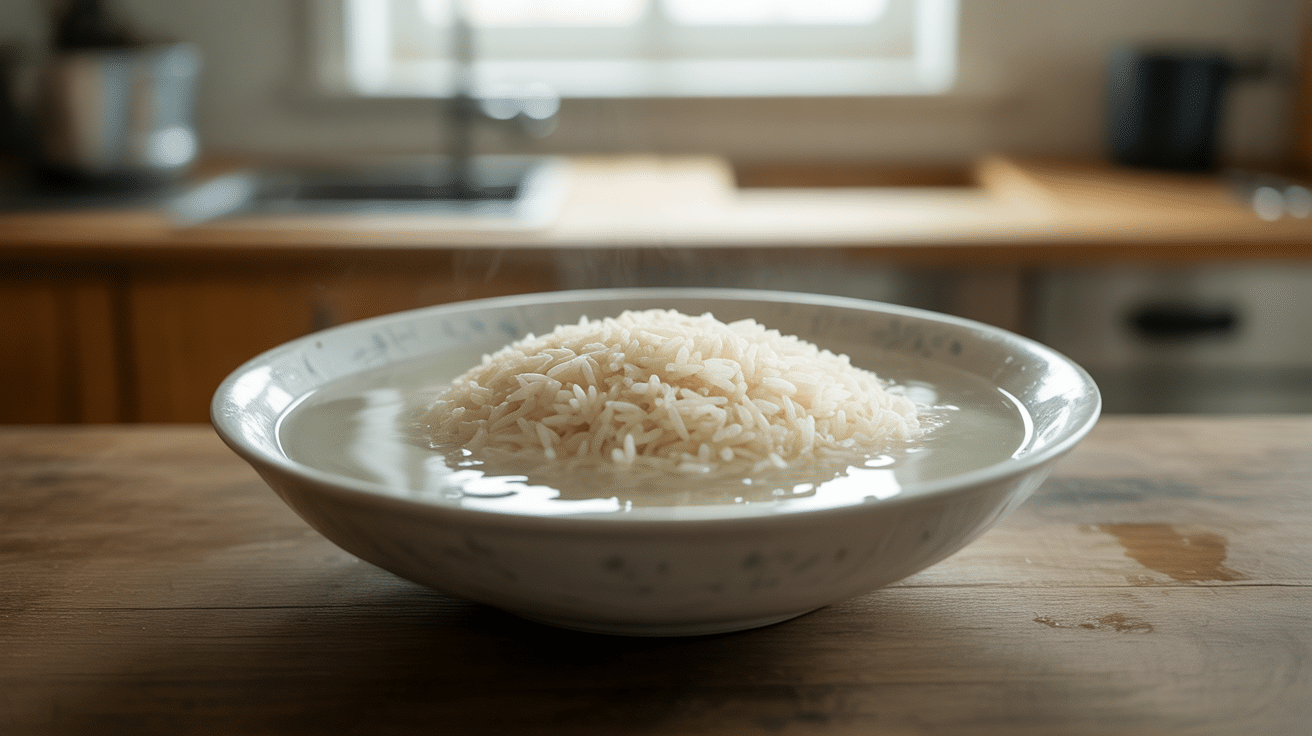
Start by rinsing the broken rice in cold water. Rub it gently with your fingers and change the water until it runs clear. This helps remove extra starch so the rice doesn’t turn sticky.
Let the rice soak in water for about 20 minutes while you prep everything else. Soaking helps it cook faster and more evenly.
Step 2: Making the Marinade for The Fish

This marinade is called rof in Senegal. Blend or mash together fresh parsley, garlic, onion, a little hot pepper (if you like it spicy), and one bouillon cube. You can do this in a food processor or with a mortar and pestle.
Take your cleaned whole fish and make small slits along both sides. Use a small spoon or your fingers to stuff the green paste deep into the slits.
This step adds flavor from the inside out. Once stuffed, let the fish sit for 10–15 minutes so it absorbs the seasoning.
Step 3: Cooking the Fish

You can either fry, broil, or bake the fish. Frying is the most common. To fry, heat enough oil to cover the bottom of a large pot. Once hot, place the fish in and cook each side for 4–5 minutes until golden brown.
If you prefer baking, place the fish on a baking tray with a little oil and roast at 400°F (200°C) for about 15–20 minutes.
Once cooked, carefully remove the fish and set it aside.
Step 4: Making the Sauce
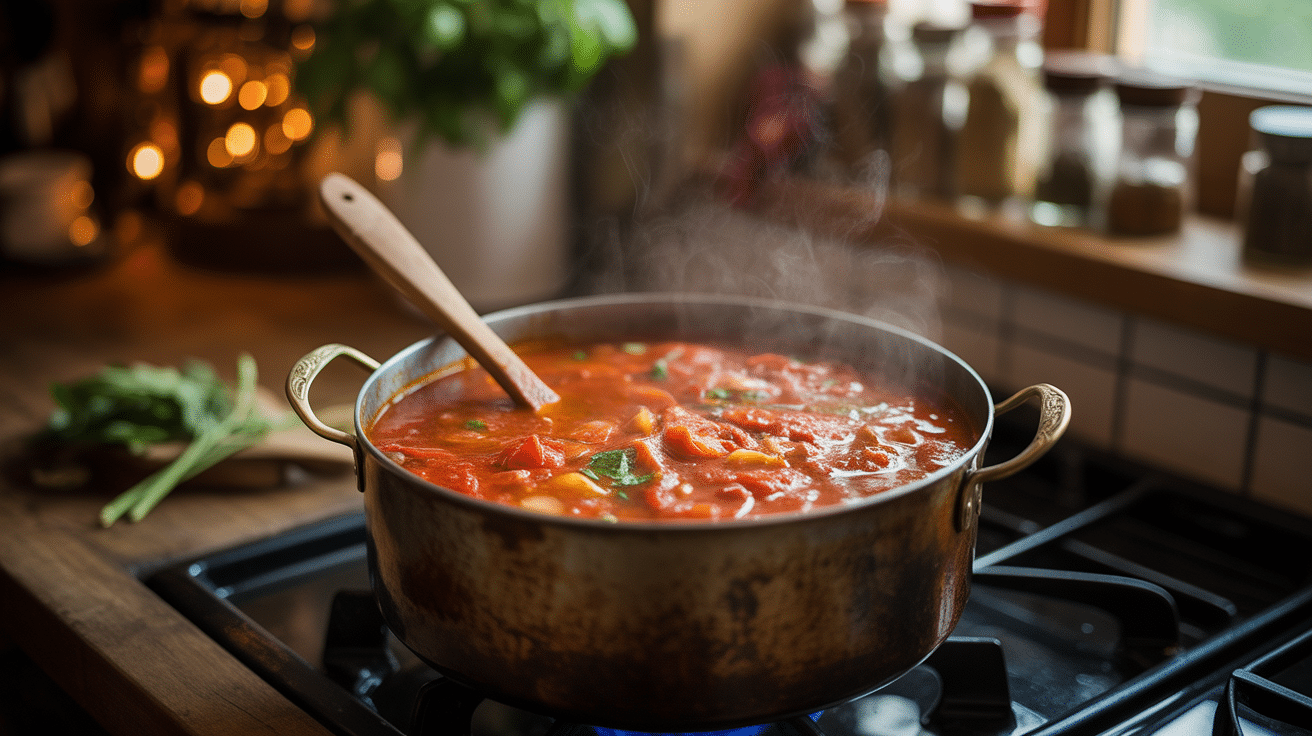
Using the same pot (and oil if frying), sauté sliced onions until soft. Add a few spoonfuls of tomato paste. Stir and cook for about 5–7 minutes. It should turn darker and smell sweet, not raw.
Now add chopped fresh tomatoes (if using), black pepper, salt, and another bouillon cube. Pour in enough water to make a flavorful broth, about 5–6 cups, depending on your pot size.
Let it simmer for 10 minutes so everything blends well.
Step 5: Cooking the Vegetables
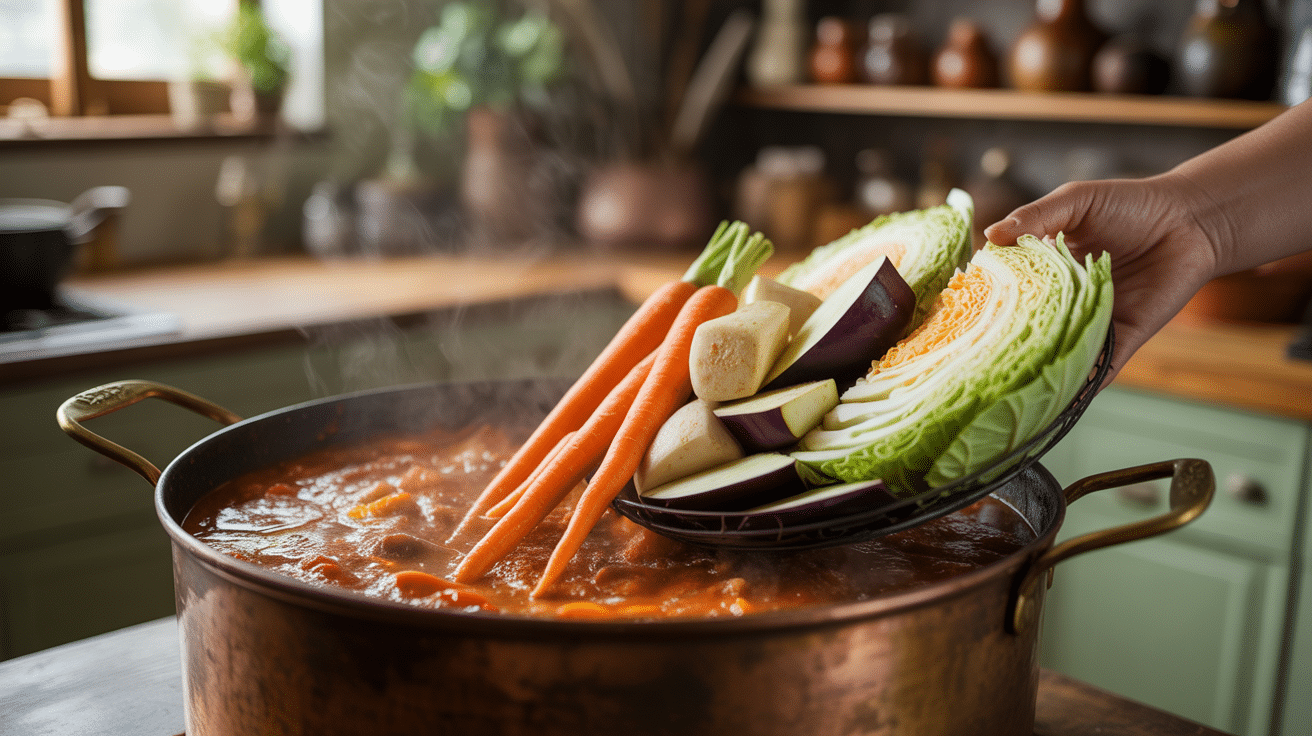
Add the vegetables in stages. Start with harder ones like cassava and carrots. Let them cook for about 10 minutes.
Then add softer ones like cabbage, eggplant, and okra. Let all the vegetables simmer in the broth until tender. This usually takes 20–25 minutes in total.
Once done, gently lift the vegetables out and set them aside. Be careful not to break them apart.
Step 6: Adding and Cooking the Rice
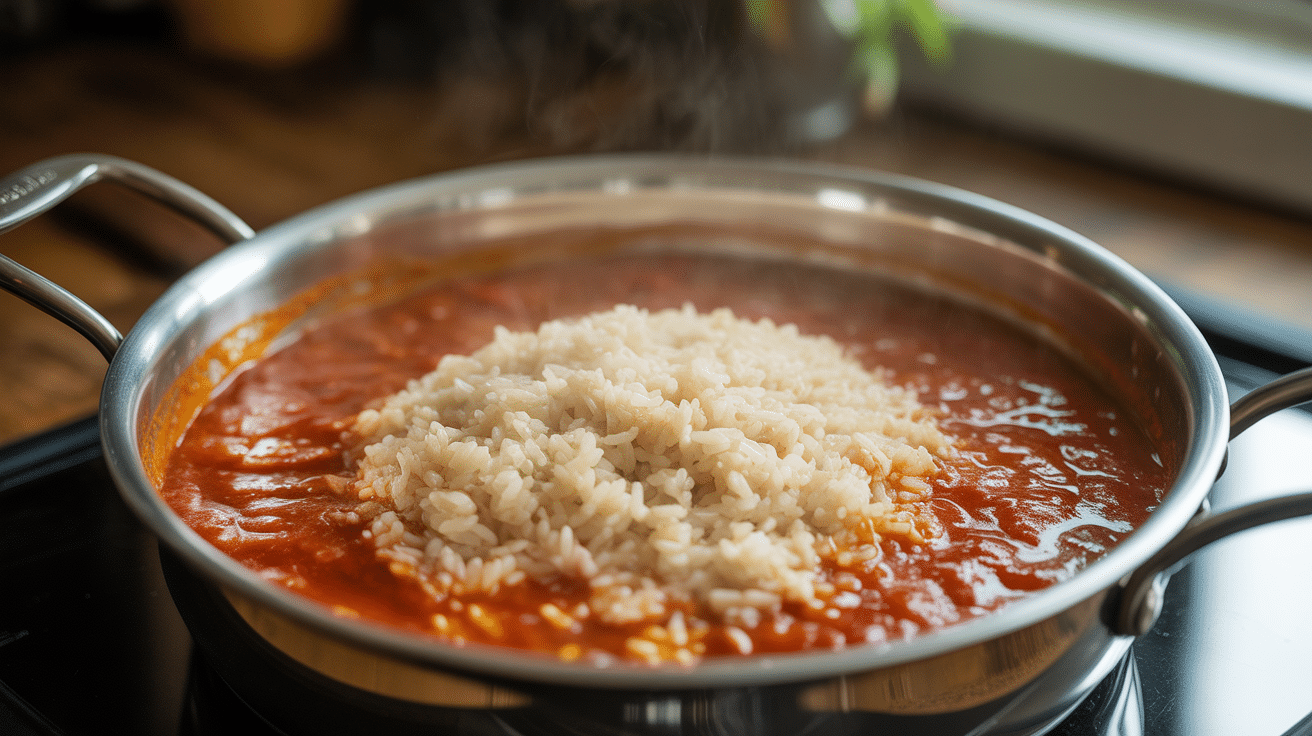
Drain the soaked rice and add it to the simmering tomato broth, making sure the liquid covers the rice – scoop out excess if needed.
Lower the heat, cover the pot, and let it cook for 20-25 minutes, stirring gently once or twice to prevent sticking.
Step 7: Combining Everything and Final Simmer
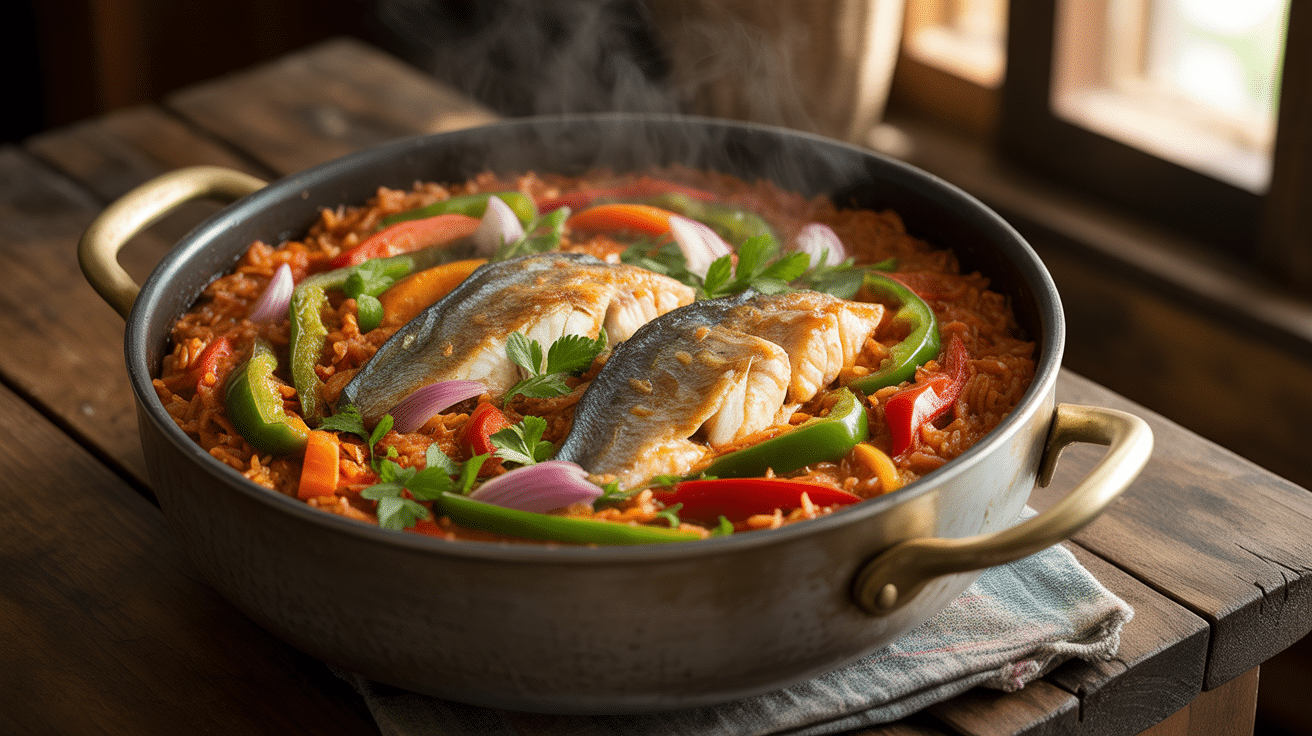
Now it’s time to bring all the parts together. Place the cooked vegetables and fish gently on top of the rice in the pot.
Cover and let everything steam on low heat for about 5 minutes. This helps blend all the flavors without overcooking anything.
Once done, remove the lid and get ready to serve.
Make It Your Own: Senegalese Jollof Rice Variations
| STYLE | WHAT TO USE | PRO TIPS |
|---|---|---|
| Different Fish | Grouper, snapper, sea bass, tilapia, or mackerel | Handle fillets gently to prevent breaking |
| Vegetarian | Tofu, sweet potatoes, zucchini, green beans | Load up on onions, garlic, and herbs for depth |
| Regional Twists | Smoked fish, hot peppers, pumpkin, and bell peppers | Use what’s available in your area |
| Gluten-Free | Check bouillon cube ingredients | Naturally gluten-free otherwise |
| Vegan | Vegetable broth, plant-based seasonings | Skip meat-based flavor enhancers |
How to Master the Perfect Senegalese Jollof Rice?
A few simple tricks can take your Senegalese jollof rice from good to absolutely incredible.
Here’s what makes all the difference:
- Rinse and Soak Rice First: This creates fluffy, separate grains that absorb flavors perfectly.
- Watch Your Liquid Levels: Just enough broth to cover the rice – too much makes mush, too little makes rocks.
- Marinate that Fish: Stuff with herb paste and let it sit 10-15 minutes for deeper flavor penetration.
- Keep It Covered: Let the rice steam undisturbed with the lid on for the fluffiest results.
- Reheat with Care: Add a splash of water when reheating leftovers to restore moisture.
The Bottom Line
Senegalese Jollof Rice is more than just a meal. With its rich flavors and colorful ingredients, it’s perfect for any day, not just special occasions.
Whether you are enjoying it with friends and family or having it on your own, it’s a comforting meal that’s sure to fill you up.
So, get into the kitchen, give it a try, and enjoy a delicious meal that everyone will love.



